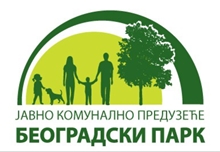
PUC "Beogradski park", Belgrade
- Kraljice Marije 1/13, 11060 Belgrade
- phone: 011/715-7135
- e-mail: office@bgpark.rs
Karađorđev Park is an authentic historical site, a camp of the main insurgent army and a military graveyard of the liberators of Belgrade under Karađorđe in 1806. The monument on this graveyard, erected by Prince Alexander Karađorđević in 1848, is the first monument in Belgrade raised in honor of a historical event, and simultaneously, the first public monument.
The park’s terrain with the graveyard and monument is the only place with preserved authentic material remains that document the stay of the insurgent army in Belgrade and evoke memories of the conquest of Belgrade in 1806. The last remains of the insurgent graveyard, which was located in a significant part of the park, consist of twelve tombstones on the graves of insurgents, set up in a row during the park’s landscaping. These monuments with stylized crosses and zigzag lines are similar to village tombstones in the Belgrade area from that period. The 1848 monument is modest in shape and decoration. It stands at a height of 547 cm and is made of yellowish stone and covered with artificial stone. The marble plates on the sides are inscribed with dedication and a text about the monument’s restoration in 1889.
Between the monuments to the third-calls and insurgents, in the central part of the park, there is a white single-story building used by the Public Utility Company Zelenilo-Belgrade, with a large paved area in front of it. This building was previously intended for the gathering of the pioneer detachment, and in front of it there was a swimming pool, which was buried and paved during the park’s reconstruction in 2003. The park was completely reconstructed in 2003. In addition to 22 species of deciduous trees, 4 species of conifers, there are also 34 species of shrubs.
It is planned to establish the Moma Kapora Pavilion in Karađorđe Park, which would include a gallery and a legacy.
